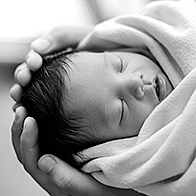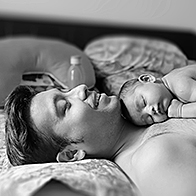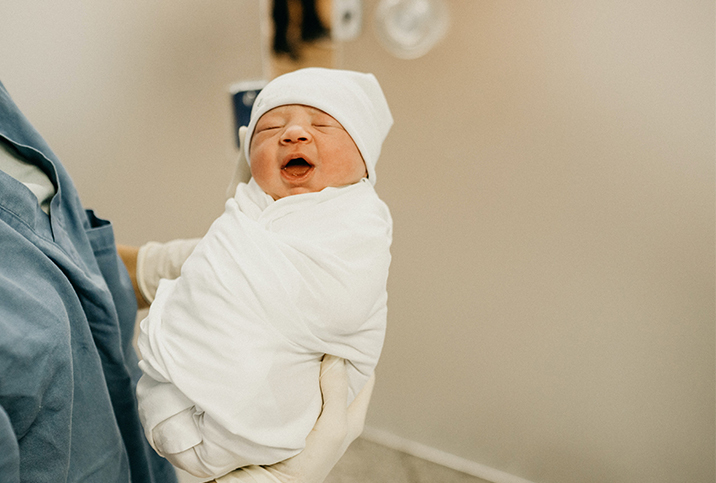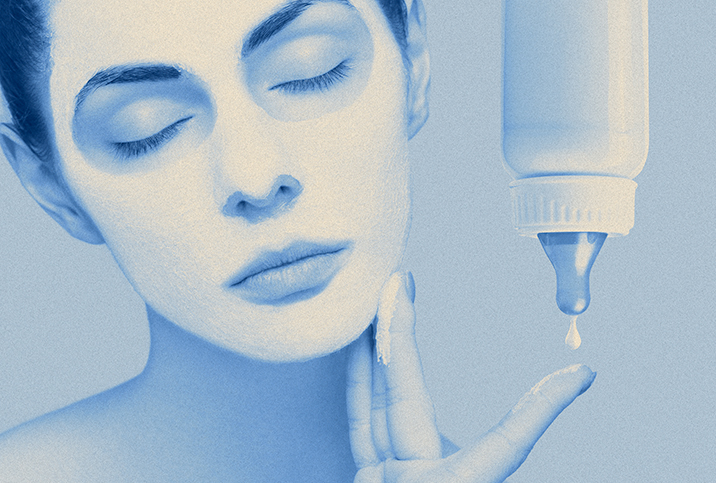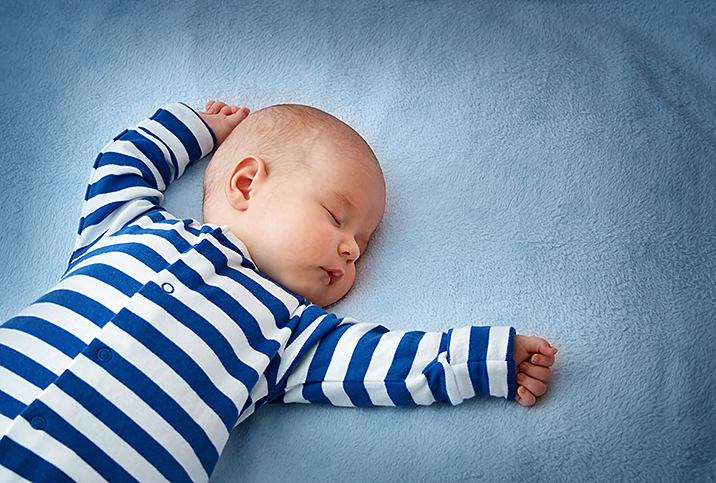Massaging Your Baby May Bring You Closer, Among Other Benefits
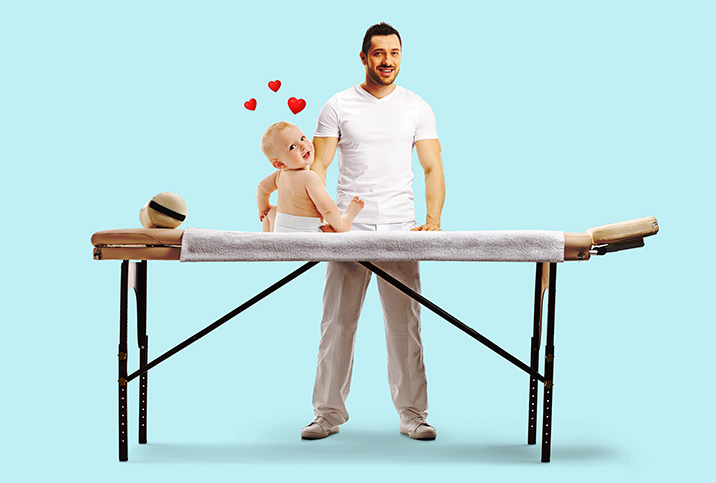
The early days of parenting can throw up all sorts of difficulties, from feeding to reflux and issues with bonding—or even wondering what to do with a tiny baby. This is where baby massage can come in.
Baby massage is thought to date back to ancient India, later gaining popularity in the United States after Vimala McClure, a yoga teacher and author in Boulder, Colorado, saw the benefits of infant massage in an orphanage in India. McClure subsequently started the International Association of Infant Massage (IAIM) in 1986.
The benefits of baby massage
While more research is needed on the benefits of baby massage, a 2019 review published in Nursing for Women's Health indicated the practice can be beneficial for both preterm infants and their parents who have experienced stress due to being in the neonatal intensive care unit (NICU) and separated as a result.
The review suggested specific benefits for the baby, including:
- A shorter stay in the NICU
- Reduced pain
- Better weight gain
- Improved feeding
- Improved neurological development
Parents who engaged in baby massage also reported a reduction in stress, anxiety and depressive symptoms.
There are several other benefits of infant massage, according to Jessica Madden, M.D., a Cleveland-based certified lactation consultant, board-certified pediatrician, neonatologist and medical director at Aeroflow Breastpumps. The practice can calm the baby, which improves their sleep and decreases their levels of the stress hormone cortisol—and it's a great way for parent and baby to bond. It can even be built into the baby's nighttime routine to get them ready for bed.
The time you spend massaging your baby can also be an opportunity to enjoy diaper-free time, because it is much easier to do when the baby is fully undressed. A pad or diaper underneath them can catch any accidents if they do happen. Diaper-free time is a good way to let the baby's skin breathe, which helps prevent diaper rash caused by dampness against their delicate skin.
Massage also offers a chance to introduce the idea of touch and consent, said Lesley Gilchrist, registered midwife and co-founder of My Expert Midwife in Harrogate, England. She recommended asking the baby if they're happy for you to start the massage, as well as looking for cues about their likes and dislikes over time. Even though the baby is nonverbal at this point, these actions become a part of their routine as they begin to understand what comes next.
"Begin slowly and gently by using touch and stroking movements with your hands on baby's body before building up any firmer pressure," Gilchrist advised.
Getting started
You can begin baby massage as soon as the baby is born, Madden confirmed.
"Healthy, full-term babies can be massaged at any time after birth, even the first day of life," Madden said.
It's important to first establish the other caregiving activities, such as feeding and adapting to your new arrival, Gilchrist advised. Babies take a while to get used to the world, so it can be enjoyable for both baby and caregiver to take a slower approach, she added.
"Begin spending time skin to skin with your baby and using gentle stroking and touch on their body to help you understand what your baby enjoys the most," Gilchrist said.
Safety considerations
Be aware of a few safety considerations before you start. One of the most practical tips is to put the baby on a flat, stable surface, such as the floor or a mattress, so they can't fall.
Gilchrist advised putting a towel on the surface to keep the baby cozy and making sure the room is warm enough so they don't get cold, especially when they are very small and unable to regulate their body temperature.
Massage should be done gently, using hands only as no props or tools are needed, Madden said. She advised that it is best to wait at least 45 to 60 minutes after feeding to start massaging to prevent vomiting.
Madden also recommended avoiding the head during the massage to prevent injury. It is especially important to avoid the top of the head, known as the fontanelle. This is the soft gap between the skull bones that closes up as the baby reaches 6 months or older.
Bonding benefits
Caregivers can use baby massage as an opportunity for eye contact, which can help build trust with the baby, Gilchrist said.
"Softly stroking and touching the skin is also known to help stimulate the production of the hormone oxytocin, which generates feelings of pleasure and love, so helps with bonding," she said.
This touching can be done in a circular motion, a gentle rolling action or up-and-down strokes, moving away from the heart to aid circulation and digestion.
She believes massage can also aid communication between parents and their baby.
"Women have reported a greater awareness of being able to anticipate their baby's needs if they regularly massage their baby," Gilchrist explained.
A small 2011 study published in the Journal of Perinatal Education indicated massage can specifically help fathers bond with their babies, although more research is needed on the subject.
While there aren't enough studies about whether massage can help soothe a baby with colic or reflux, Madden believes trying gentle massage might help and definitely won't hurt.
Another aspect to consider is what to put on your baby's skin, as Madden noted babies can easily absorb chemicals in oils and lotions into their bloodstream. Her advice was to dilute any oils, lotions or creams, and all options should be fragrance-free and hypoallergenic. Gilchrist also cautioned that a baby's skin is thinner than adults' and only high-quality ingredients should be used.
If you have any concerns about baby massage, always contact your physician for advice. Otherwise, enjoy every second of those happy baby bonding moments.







